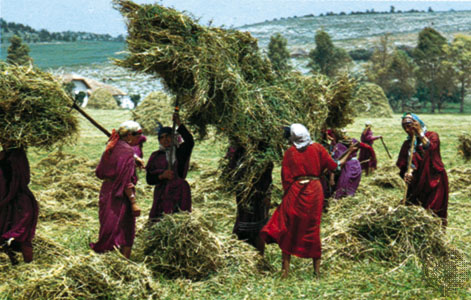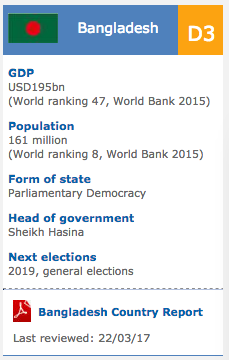Tunisia: Tunisia Agriculture Profile
2012/04/05

Reference Date: 07-February-2014
|
FOOD SECURITY SNAPSHOT
|
Planting of winter grains to be harvested from May 2014 is completed. The northern part of the country, primarily producing cereals, has suffered from lack of rains in December. However, return of rains in January has been providing vegetative wheat and barley with sufficient moisture for development. Southern part of the country did not experience a period of dryness. In Tunisia crop production varies markedly from year to year depending on the significant rainfall variations.
Below average cereal harvest gathered in 2013
The 2013 grain harvest in Tunisia suffered from insufficient rain during the planting season in late 2012 resulting in decreased wheat and barley planted area by about 25 percent compared to 2012. The 2013 cereal production reached about 1.3 million tonnes. At this level, the crop was about 50 percent lower than last year’s exceptional crop and some 34 percent lower than the previous five-year average. Most of the grain produced is wheat which in 2013 at about 1 million tonnes recorded a decrease of over 40 percent compared to last year.
Tunisia relies heavily on grain imports, mainly wheat, even in good production years. Accordingly, cereal import requirements in the current marketing year 2013/14 (July/June) are put at about 3.4 million tonnes, about 20 percent higher than last year and 23 percent higher than the five‑year average.
Domestic grain prices stable but some increases observed in the rate of inflation
In spite of the country’s high import dependency rate, changes in international grain prices do not translate into changes in domestic prices, mainly due to Government subsidies on basic food items. Prices of wheat products, the main staple in the country, are relatively stable, as reflected by the very low inflation of bread and cereals (less than 3 percent on yearly basis since January 2012). Overall, the consumer price index (CPI) reached 6 percent in December 2013 on yearly basis, while the food price inflation reached 8.55 percent, fuelled by over 10 percent increases in meat and vegetable prices.
Economic growth recovers but unemployment rate remains high
The economy is slowly recovering from the 1.8 percent contraction in 2011 to a forecasted growth of about 3 percent in 2014. The Tunisian economy is severely affected by the economic and financial difficulties that the countries of the European Union, Tunisia’s main trading partners, are going through.
The unemployment rate remains at high level (15.9 percent in the second quarter of 2013, a slight decrease from the 19 percent in 2011). Youth unemployment (15‑29 year olds) remains particularly high reaching over 30 percent in 2012.
- Tunisia News
-
- TUNISIA: Roman "underwater ruins" discovered in Tunisia
- AFGHANISTAN: UNWTO: International tourism – strongest half-year results since 2010
- BOTSWANA: Why governments need to support the financial sector to meet the unserved needs of smallholder farmers
- BOTSWANA: International Arrivals To Africa Reach More Than 18 Million In 2017
- TUNISIA: Roman ruins discovered underwater off Tunisia
- BOTSWANA: Africa: USA-Africa - No Policy? Bad Policy? or Both?
- Trending Articles
-
- CHINA: China welcomes Guinea to take part in Belt and Road Initiative
- CAMEROON: Poor End of Year Results for Cameroon Students
- UGANDA: Ugandan Govt Starts Verifying International Academy Teachers
- AUSTRALIA: Queensland Bauxite Gains State Approval of Mineral Development Work Program
- CHINA: Chinese-supported infrastructure projects change Zambia's landscape
- UNITED STATES: Spotify, Hulu target students with discounted bundle






.gif?1356023993)


